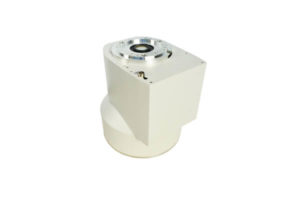Home›Blog ›What is the principle of image intensifier?
What is the principle of image intensifier?
A cylindrical electrode placed between the photocathode and the anode focuses the electrons emitted from the photocathode onto the output screen. Three focusing electrodes are typically used. The glass package is contained in a high permeability alloy (alloy containing iron) outer casing. The outer casing attenuates the magnetic fields generated outside the enhancer and prevents these magnetic fields from distort the movement of electrons inside the enhancer. The strong magnetic field around the image intensifier can still distort the motion of the electrons, so the image on the output screen is distorted. In addition, the strong magnetic field around the image intensifier can magnetize the high permeability alloy casing and the focusing electrode and cause permanent distortion of the fluorescent image. Therefore, the image intensifier should not be placed near a permanent or transient strong magnetic field (such as near a magnetic resonance imaging system).


Using the X-ray image intensifier, there are four different information carriers that pass the patient’s information to the radiologist, and the X-ray harness passes the information from the patient to the input screen of the image intensifier. On the input screen, the information changes from X-ray to visible light photons. When the visible photons are absorbed by the photocathode, the information becomes an electron beam directed to the enhancer output screen; the information is transmitted from the output screen to the observer’s retina in the form of a visible light image.
Author:Alina
Product Category
News
Contact us
Tel: (+86) 18953679166
Whatsapp: +86 18953679166
Email: service@newheek.com
Company: Weifang Newheek Electronic Technology Co., Ltd.
ADD: E Building of Future Star Scientific Innovation Industrial Zone of No.957 Wolong East Street, Yulong Community, Xincheng Sub-District Office, Weifang Hi-tech Zone, Shandong Province, China





